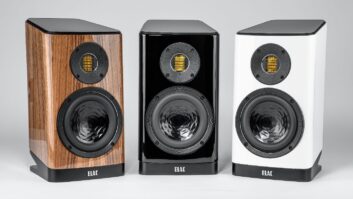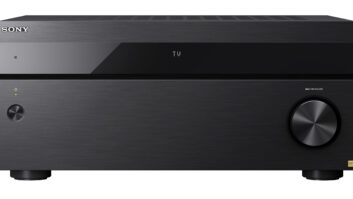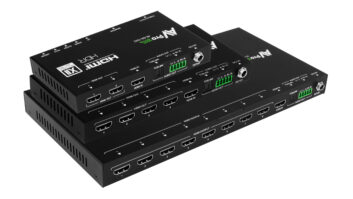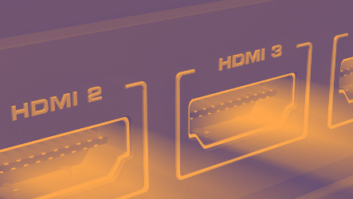At this point, if you haven’t sold, installed, or integrated with a new Ultra High-Def, 4K (and, yes, please realize that I do understand that 4K is technically the incorrect terminology for this new format, as that refers to the cinematic resolution of 4096×2160, but for brevity sake, please allow me this leeway) TV, then you have either given up on the industry, likely with a large “EVERYTHING MUST GO!” sign in front of your shop or you have stumbled across this site searching for some other kind of “residential system.” Perhaps home elevator installations. That’s because UHDTV has quickly become the standard for practically any TV priced over $1,500. It is also being aggressively marketed at even the entry levels by companies like Sony, which is currently offering a 43-inch model for $799 and a 49 incher for $999.
This means that you will soon be installing 4K sets in every room of every project. Great, right?
Mostly…
Unfortunately the whole HDCP 2.2 thing is looming out on the horizon for all of our jobs, a little like a mega asteroid off in some distant part of the galaxy. It’s an asteroid that is slowly spinning and rotating its way toward us in an inevitable death orbit that the guys down at Arecibo just know is gonna plow into the planet…someday.

We know what HDCP 2.2 is, we know it is imminently upon us, and we know that it is going to negatively impact nearly every installation we have out there at some point. The question is…when?
Just for giggles, here’s a quick primer on HDCP 2.2 and why it is such a Terminator-bot sent to us from Cyberdyne. HDCP stands for High-bandwidth Digital Content Protection and it’s been around playing evil tricks on installers protecting digital content since 2000. Developed by Intel, HDCP works by having the transmitting, source device—like a cable box, Blu-ray player, or media player—initiate a digital “handshake” that passes through all of the devices it is connected to, creating a secure, theoretically unbreakable signal chain. Each device the signal passes through decrypts the signal before re-encrypting and retransmitting—“repeating”—it along, confirming it is secure and that it’s authorized to pass on the signal. The display at the end of the chain—known as the “sink”—responds with an “OK to send” handshake that passes through all devices and back to the source indicating everything is on the up-and-up. When it all works, you get a pristine image on the screen. And when it doesn’t…
To protect UHDTV’s glorious, 8-million-plus-Hollywood-reference-pixels against Pirate Bay hackers, Intel developed a more robust version of HDCP, version 2.2. And here’s the part that’s going to come and bite you on the you-know-what: For UHDTVs to display a true 4K image, every link in the signal chain must be HDCP 2.2 compliant. (Cue ominous music…) This means not just the new 4K TV, but also the AV receiver, the video processor, the matrix video switch, the send, and receive baluns must be HDCP 2.2 compliant. Every. Link. In. The chain. And if one part of the chain isn’t 2.2, then that brand-new TV you installed will end up with eight million pixels of nothing. (Well, to be fair, you might get like 250,000 pixels displaying an “Unable to play video” message.)
Fortunately, your existing high-speed rated HDMI cables should all be fine. The HDMI gods are not wholly cruel and without soul. Also it’s important to remember that HDCP 2.2 only concerns itself with protecting true, 4K UHDTV content; traditional 1080p material like Blu-ray discs or cable/satellite programming won’t have any issues with 2.2 or viewing on a new 4K TV.
The component likely to be affected the most on our jobs is the AV receiver. As I previously wrote in my “HDCP 2.2 – The State of the UHDTV Industry” there are very few AVRs on the market currently supporting HDCP 2.2. While this was irrelevant when spec’ing them in with a traditional 1080p set, it is a bit like putting a ticking time bomb into a 4K system.
Fortunately, this is imminently changing, as new AVR models from Yamaha, Denon, Marantz, and Pioneer are starting to hit the streets, joining existing models from Sony, Onkyo, Integra, and Krell, and soon to be joined by others. Six to nine months from now, HDCP 2.2 will be something we can all laugh—and drink—about, but today it likely makes every receiver currently in your inventory and many you might be spec’ing into jobs finishing now a “should I/shouldn’t I?” install proposition.
Installers also need to be aware that there are some devices—video switches and baluns—on the market promoted as being “4K” or “4K-Ready,” when in fact they won’t actually support true 4K signals due to non HDCP 2.2-compliance. Make no mistake: “No 2.2” means no 4K video for you.
And because HDCP 2.2 requires new hardware and silicon, there is no way to firmware upgrade or software update non-HDCP 2.2 devices, and very few manufacturers offer any kind of upgrade solution for existing components.
While the only true 4K source currently available is Sony’s Ultra High Definition Media Player, later this year will see the introduction of a new 4K player from DISH Network, the new Ultra HD Blu-ray player, and a new 4K cable box from Comcast. Surely more will follow. And all 4K source devices will be HDCP 2.2 compliant. And require a full 2.2 signal path to display their 4K images.
As these new source devices start making their way to the market and become a de facto part of our installs, they are going to wreak havoc with legacy systems. As your customers ask to add a new UHD BD player, cable/satellite STB, or media player to their systems, this could potentially result in five-figure “upgrades” if video matrix and distribution systems are involved.
I, for one, don’t look forward to having that conversation with my customers.
John Sciacca is principal of Custom Theater and Audio in Myrtle Beach, SC.







